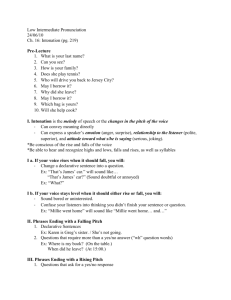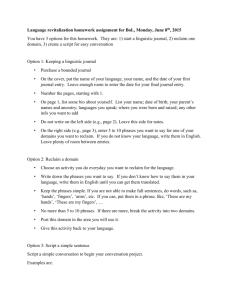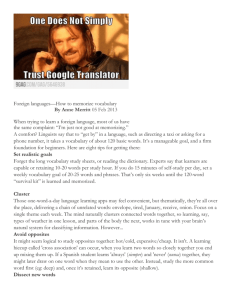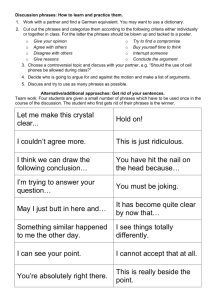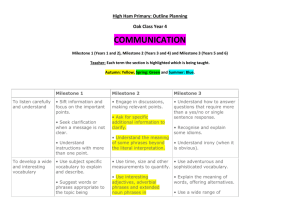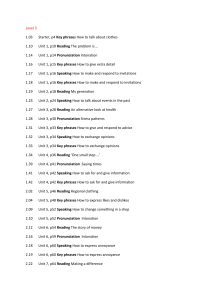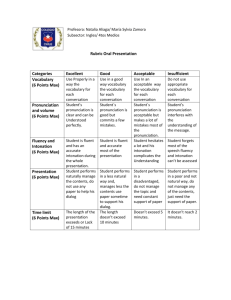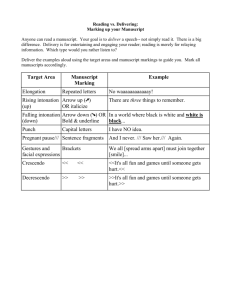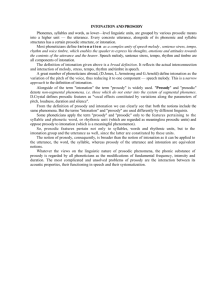Intonation phrases as action components
advertisement
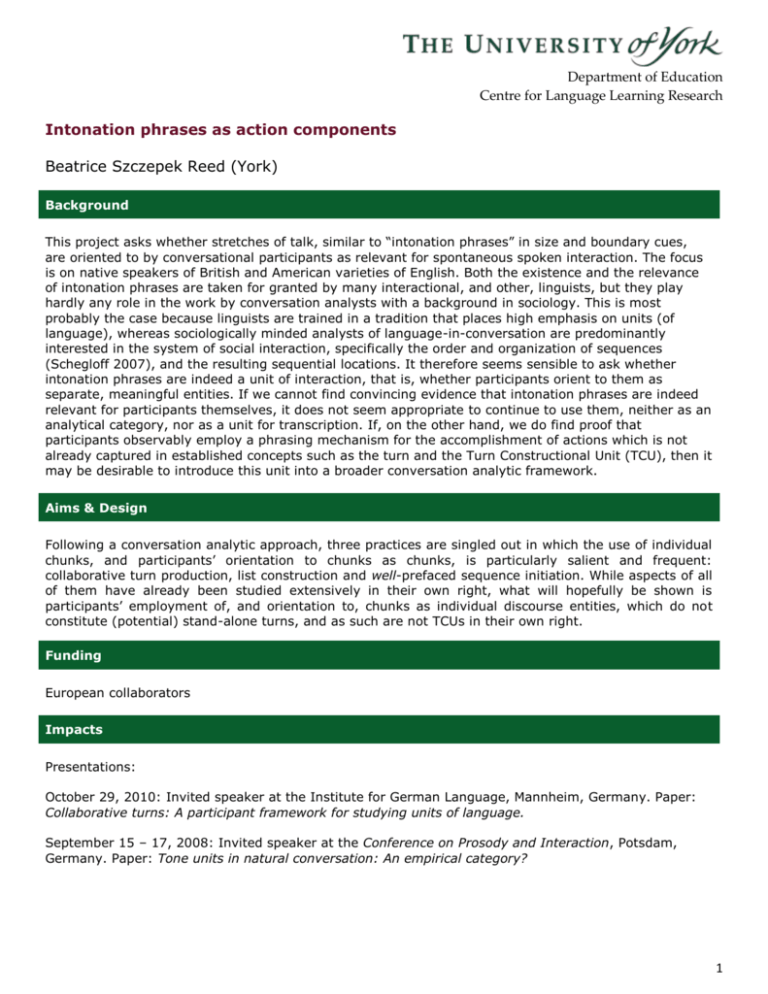
Department of Education Centre for Language Learning Research Intonation phrases as action components Beatrice Szczepek Reed (York) Background This project asks whether stretches of talk, similar to “intonation phrases” in size and boundary cues, are oriented to by conversational participants as relevant for spontaneous spoken interaction. The focus is on native speakers of British and American varieties of English. Both the existence and the relevance of intonation phrases are taken for granted by many interactional, and other, linguists, but they play hardly any role in the work by conversation analysts with a background in sociology. This is most probably the case because linguists are trained in a tradition that places high emphasis on units (of language), whereas sociologically minded analysts of language-in-conversation are predominantly interested in the system of social interaction, specifically the order and organization of sequences (Schegloff 2007), and the resulting sequential locations. It therefore seems sensible to ask whether intonation phrases are indeed a unit of interaction, that is, whether participants orient to them as separate, meaningful entities. If we cannot find convincing evidence that intonation phrases are indeed relevant for participants themselves, it does not seem appropriate to continue to use them, neither as an analytical category, nor as a unit for transcription. If, on the other hand, we do find proof that participants observably employ a phrasing mechanism for the accomplishment of actions which is not already captured in established concepts such as the turn and the Turn Constructional Unit (TCU), then it may be desirable to introduce this unit into a broader conversation analytic framework. Aims & Design Following a conversation analytic approach, three practices are singled out in which the use of individual chunks, and participants’ orientation to chunks as chunks, is particularly salient and frequent: collaborative turn production, list construction and well-prefaced sequence initiation. While aspects of all of them have already been studied extensively in their own right, what will hopefully be shown is participants’ employment of, and orientation to, chunks as individual discourse entities, which do not constitute (potential) stand-alone turns, and as such are not TCUs in their own right. Funding European collaborators Impacts Presentations: October 29, 2010: Invited speaker at the Institute for German Language, Mannheim, Germany. Paper: Collaborative turns: A participant framework for studying units of language. September 15 – 17, 2008: Invited speaker at the Conference on Prosody and Interaction, Potsdam, Germany. Paper: Tone units in natural conversation: An empirical category? 1 Department of Education Centre for Language Learning Research Publications Szczepek Reed, B. (2012): “Prosody, syntax and action formation: intonation phrases as ‘action components’”, in Bermann, P., Brenning, J., Pfeiffer, M. and Reber, E. (eds.) Prosody and Embodiment in Interactional Grammar, Berlin: de Gruyter, 142-169. Szczepek Reed, B. (2010): Intonation phrases in natural conversation: A participants’ category? In: Barth-Weingarten, D., Reber, E. and Selting, M. (Eds.) Prosody in Interaction. Amsterdam: Benjamins. Pp. 191-212. Szczepek Reed, B. (2010): Units of interaction: Tone units or Turn Constructional Phrases?. In: DelaisRoussarie, E. (Ed.): Conference Proceedings: Interface Discourse and Prosody. Paris, 9-11 Sept. 2009. Pp. 351-363 2


